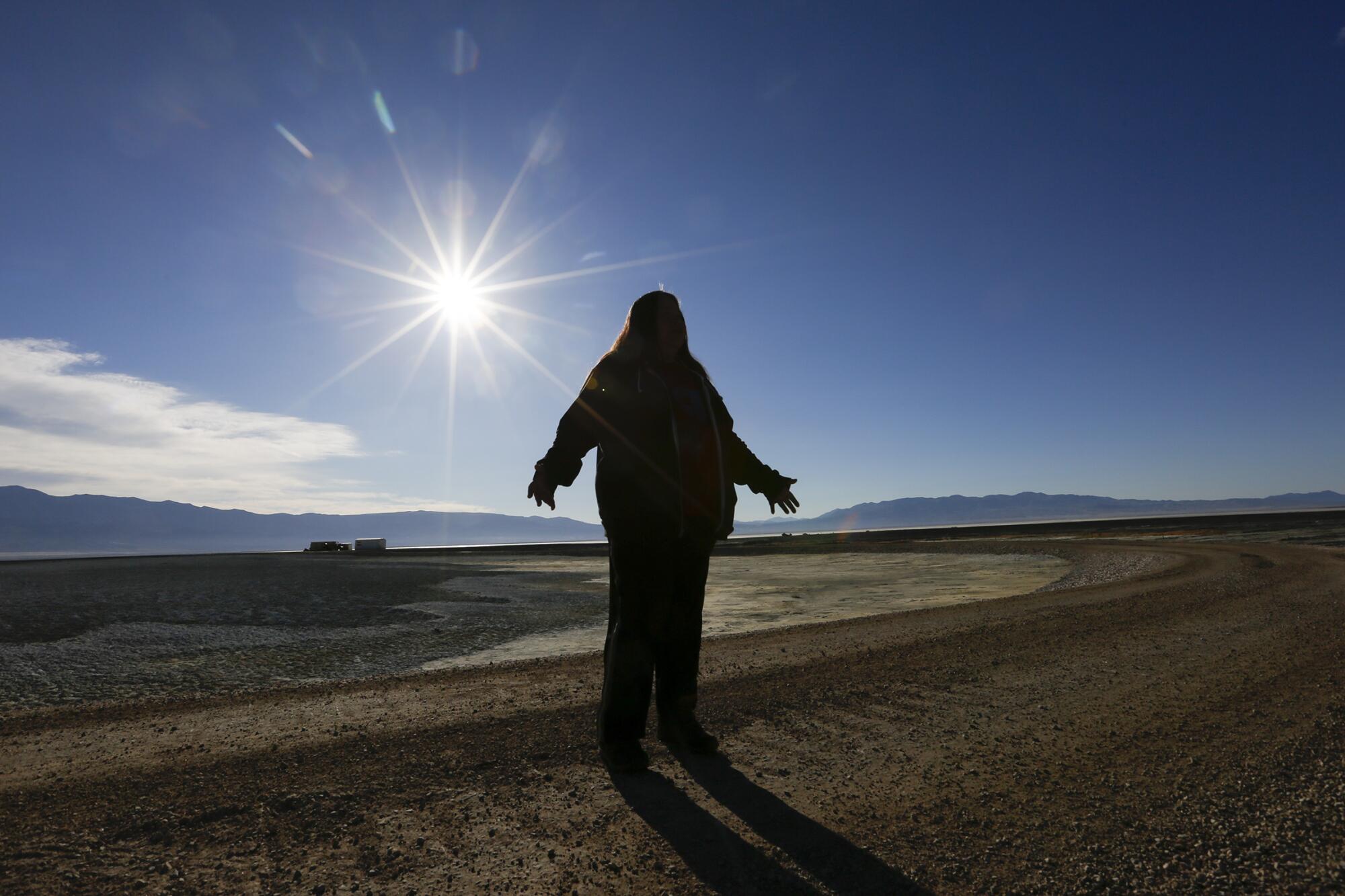
- Share via
OLANCHA, Calif. — Even as worsening drought and aridification force Los Angeles to end its overwhelming dependence on imported water, Angelenos may soon realize that weaning themselves off supplies from the rugged eastern Sierra Nevada doesn’t mean they will stop paying for the city’s long, complicated history there.
That’s because, even if the city is able to make good on a pledge by Mayor Eric Garcetti to recycle 100% of its water by 2035 and increase its ability to capture storm water, Los Angeles will still have to pay millions of dollars to control the region’s hazardous dust pollution — an environmental consequence of L.A.’s draining of Owens Lake more than a century ago, as well as recent diversions that have lowered the level of Mono Lake farther north.
Recently, the Los Angeles Department of Water and Power accused Owens Valley air pollution authorities of “regulatory overreach” when they fined the utility $21 million for ignoring an order to control dust on a 5-acre patch of dry lake bed. The order and subsequent fine imposed by the Great Basin Unified Air Pollution Control District was an attempt to “squeeze” cash from the city’s water users, the DWP said.
The Colorado river; where the West quenches its thirst
“Enough is enough,” read a statement from Cynthia McClain-Hill, president of the Los Angeles Board of Water and Power Commissioners. “More than 20 percent of our ratepayers live below the poverty line, and we cannot allow the people of Los Angeles to serve as a blank check for Great Basin’s illegal orders.”

The agency also angered Mono Lake officials and conservationists recently when it signaled to the Los Angeles City Council that it wanted to scrap portions of a 1994 agreement that aims to control dust emissions at Mono Lake, the hyper-saline water body east of Yosemite National Park famous for its craggy tufa formations.
Arguing that climate change and drought have fundamentally altered the state’s water supply, DWP officials suggested that it was impossible for them to ensure Mono Lake remained at certain dust-damping levels.
To be sure, DWP ratepayers will see increases due to the cost of transforming the city’s water infrastructure. However, officials say the demands by Great Basin will add even more to their water bills.
For their part, Owens Valley officials accuse Los Angeles of trying to avoid responsibility for the environmental damage its water use has caused.
“The city wants to undermine our authority to protect people’s health and safety by ordering dust control measures where needed,” said Phil Kiddoo, the air district’s enforcement officer. That enforcement authority is granted under a 2014 agreement between the DWP and the air district, he said.
The water diversions that began in 1913 dried up the 110-square-mile Owens Lake, triggering immense sheets of powder-fine, lung-damaging particles that descended on towns downwind. Over the last three decades, the DWP has spent more than $2.5 billion on projects that have reduced dust emissions by nearly 100%.
“Despite this achievement, Great Basin has refused to acknowledge the success of the program, and instead has issued a series of orders and associated fines that demonstrate a clear pattern of overreach of its regulatory role,” read a DWP statement.
For the first 90 years of its existence, the Los Angeles Aqueduct met more than 60% of the city’s demands. Today, however, half of that water must be directed onto Inyo County ranch lease operations, fisheries and dozens of court-stipulated mitigation projects to meet federal air pollution standards.
In a lawsuit filed in Sacramento County Superior Court — where the 2014 agreement was entered — air district officials allege that the DWP’s refusal to control dust emissions on the 5-acre area is a violation of the pact.
Under an earlier agreement, the DWP must fund 85% of Great Basin’s annual operating budget — about $7 million — and pay for all district legal fees whether it wins or loses in court.
The DWP has responded by filing its own lawsuit in Los Angeles County Superior Court, accusing the air district of exceeding its authority and ordering dust control measures without first conducting an environmental analysis of its impacts, as required by the California Environmental Quality Act.
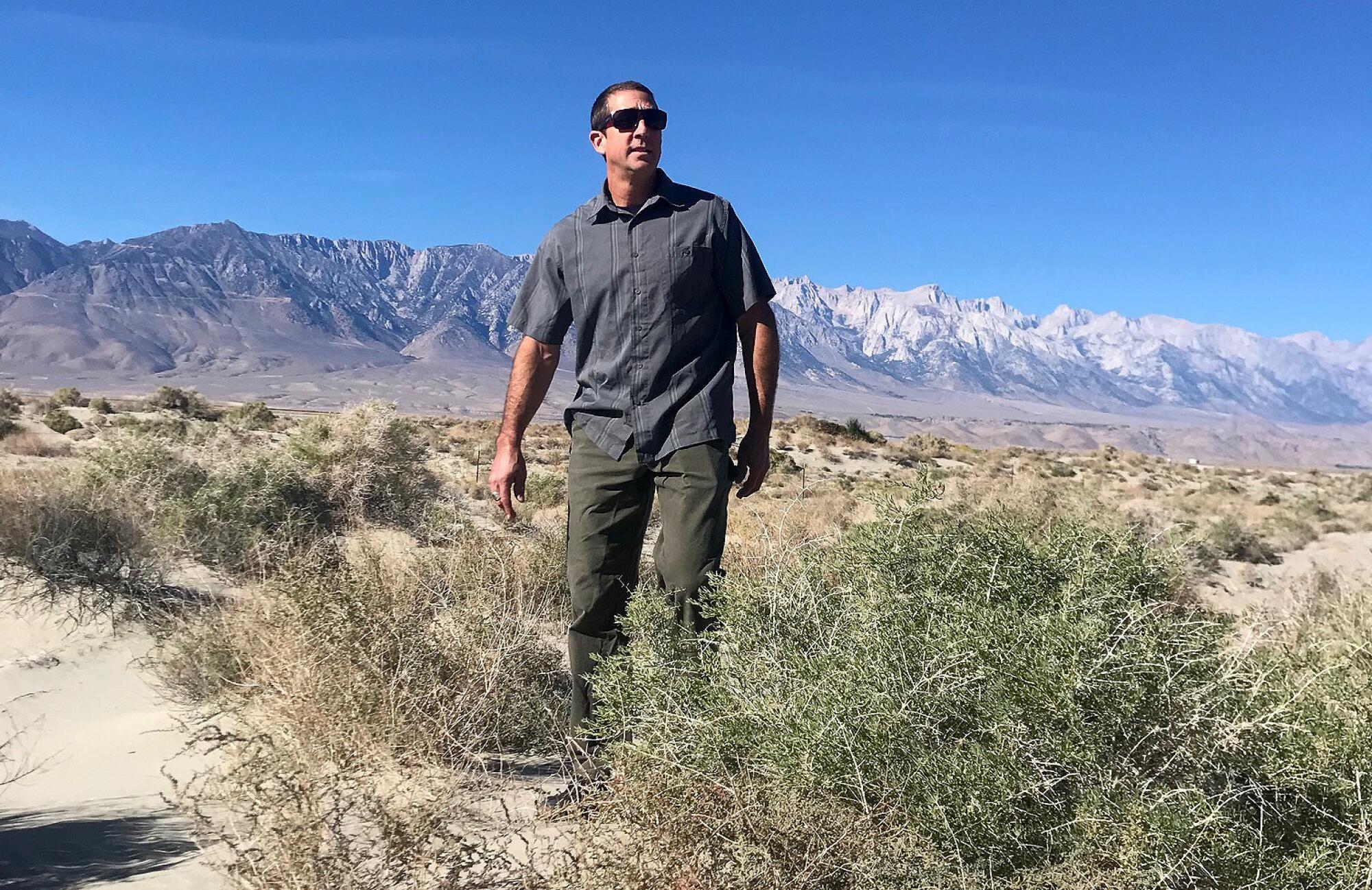
“This 5-acre project may seem small — but it would result in a huge hit for our ratepayers,” said Marty Adams, general manager and chief engineer of the DWP. “It would add about $2 onto their monthly water bills. And for what? A pet project the district cooked up that doesn’t meet regulatory requirements.”
Adams said that there was “no end in sight” for such demands. “We hope it doesn’t blow up the 2014 agreement.”
Not only does the DWP accuse Great Basin of overstepping its authority, officials argue that the work would need the approval of five Indigenous tribes that have nominated 186 square miles of the lake bed for listing in the California Register of Historical Resources and in the National Register of Historic Places.
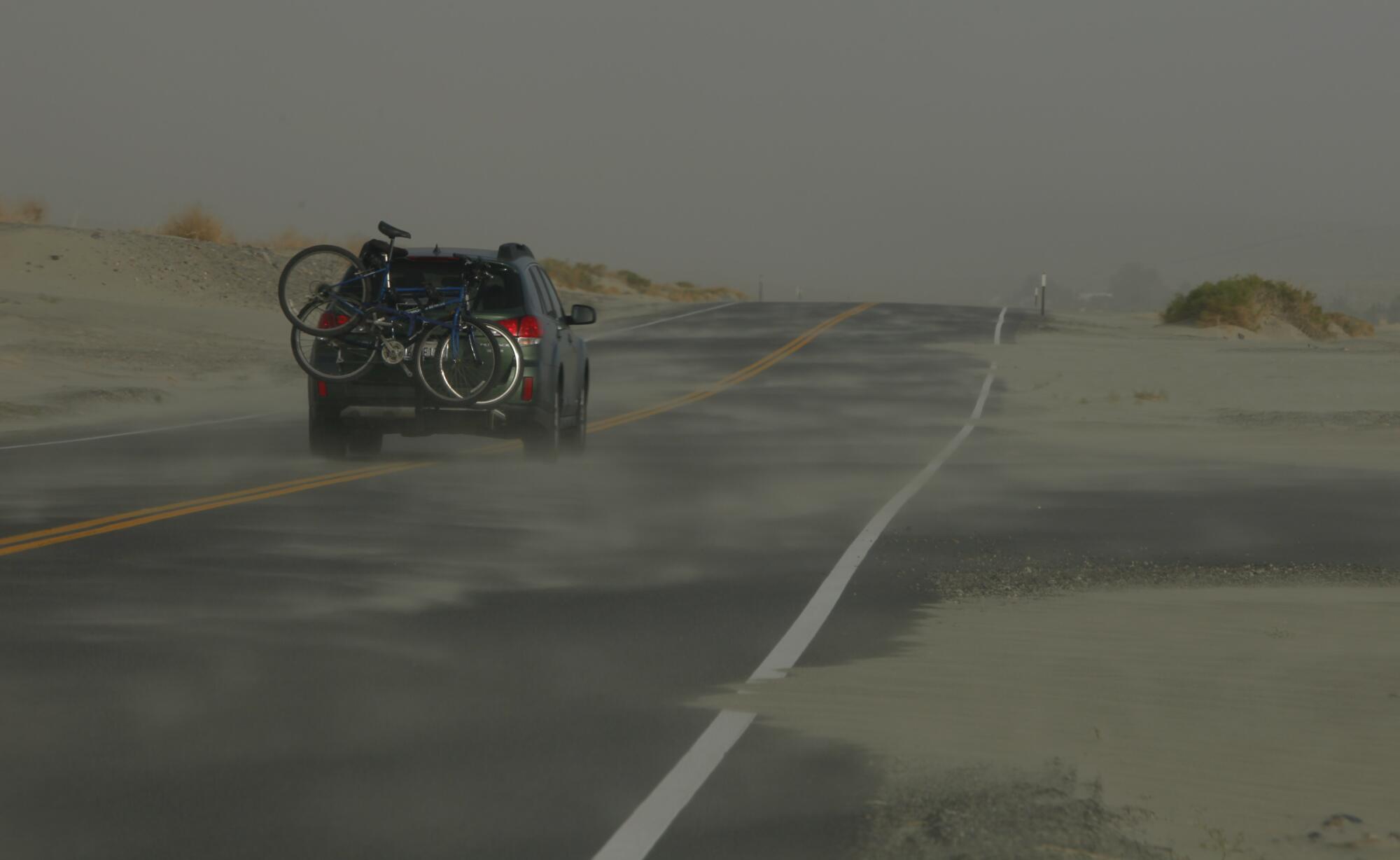
One of those tribes, the Fort Independence Indian Community of Paiute Indians, has not yet said whether it sanctions the project.
“We are shocked to see Great Basin attempting to mandate that LADWP act in opposition to the requests of our tribal partners,” read a statement from Paul Liu, manager of the utility’s Owens Lake Dust Mitigation Program.
Great Basin argues that the mitigation area is not on tribal land. The agency says it is held in trust by the State Lands Commission, which supports the implementation of air pollution controls.
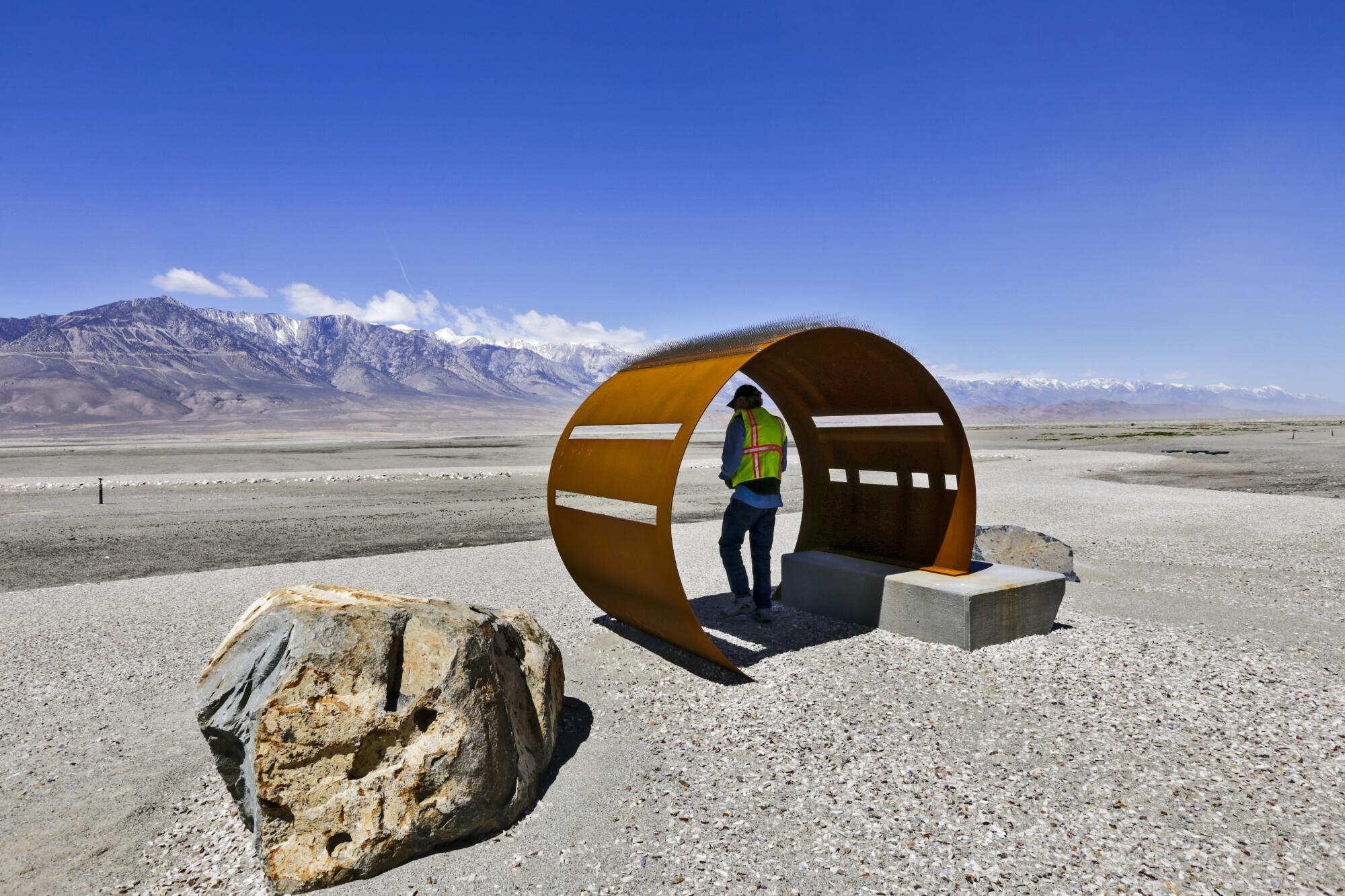
The dispute underscores the acrimony that has seethed in Owens Valley since the early 1900s, when the city had agents pose as farmers and ranchers to buy land and water rights in the valley, then began building an aqueduct to collect and divert water from Inyo County to the water-craving metropolis to the south.
“The LADWP is always looking for an excuse to avoid doing the right thing for the people of Owens Valley,” said Michael Prather, a botanist and longtime Sierra Club activist in the community of Lone Pine. “In the meantime, we breathe toxic dust while people in Los Angeles build more golf courses and swimming pools with our water.”
The air pollution generated by the 5-acre area in dispute “can be severe,” according to the district’s lawsuit.
Particulate-matter air pollution can remain airborne for long periods and can lodge deep in the lungs and cause scarring, respiratory illnesses, cardiovascular disease, as well as more frequent attacks of asthma in children.
The hazardous effects of so-called PM10 — particles that are less than 10 micrometers in diameter, far smaller than the width of a human hair — extend to large areas downwind of Inyo County, district officials say, including the city of Ridgecrest and the Naval Air Weapons Station China Lake.
“Based upon data from this area collected on April 16, 2018,” the district’s lawsuit says, “PM10 emissions were 160 percent of the federal standard of 150 micrograms per cubic meter.” That air pollution was transported to the community of Lone Pine, about nine miles downwind, it says.
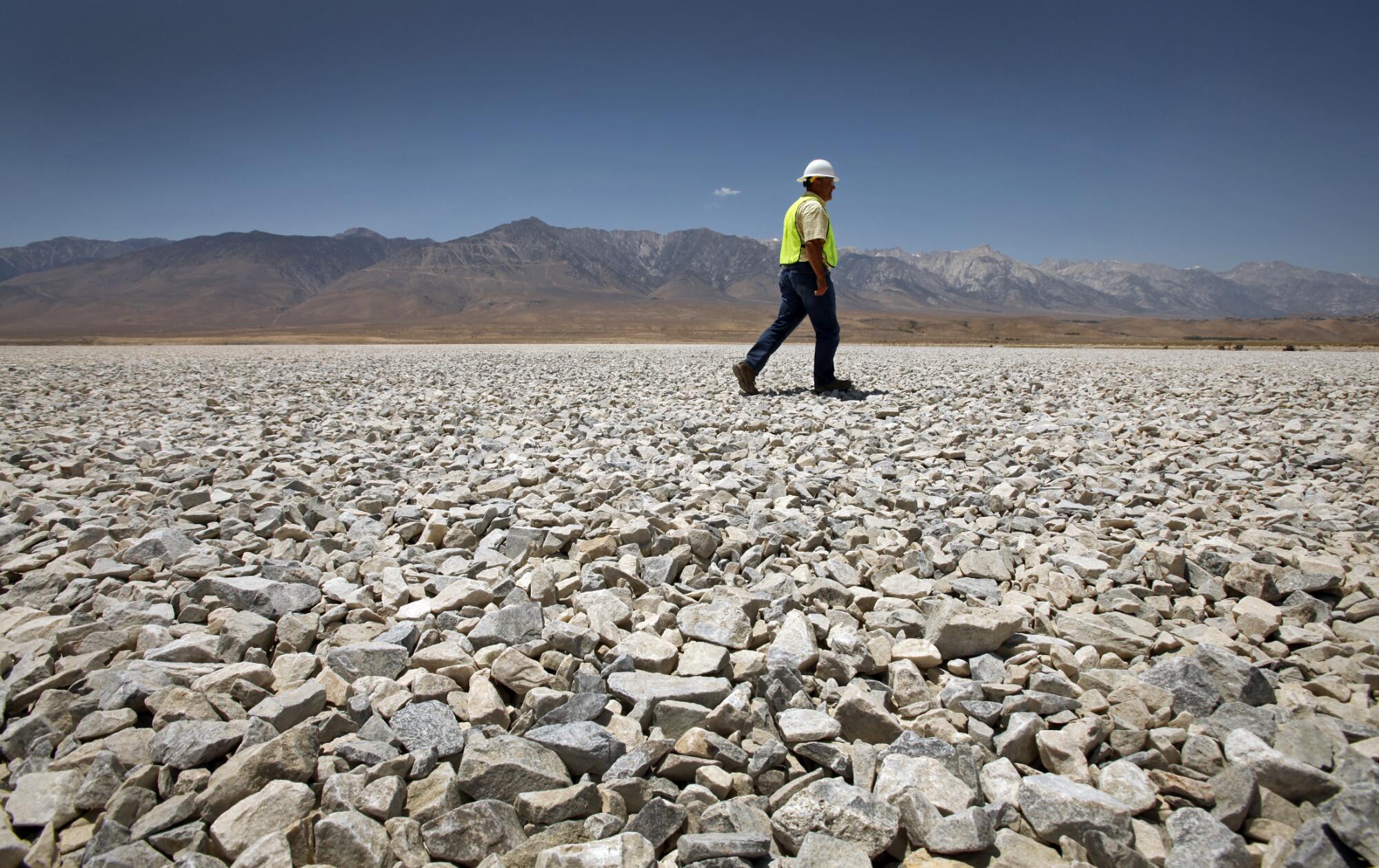
Under the 2014 agreement, the city agreed to comply with district orders to implement controls on 48.6 square miles of the lake bed, and up to 4.8 additional square miles, if needed. It provided a cap on the total area that could be ordered for dust control by the district in return for the city’s agreement not to challenge those orders.
But the agreement did not settle the matter in the heavily litigated region where old-timers recall that each of the last four mayors of Los Angeles, in turn, proclaimed, “The bad old days are over in Inyo County.”
Then there was a DWP manager who bragged, “Litigation is cheaper than water.”
The agreement allows use of shallow flooding, managed vegetation, gravel and tillage to contain and prevent dust emissions.
The project in question was designed to minimize ground disturbance and encourage growth of existing shrubs through seasonal watering. A 1,000-foot-long water line laid on top of the ground would feed three hose spigots to allow tribal members to water the vegetation. The water would be supplied by a DWP water trailer parked nearby.
The DWP doubts the effectiveness of the plan.
“It is not a tested dust control method,” said Joseph Ramallo, the utility’s assistant general manager of water and power. “We have no evidence to prove that it will work to control dust or protect cultural resources, meaning any expenditure could be a complete waste of our customers’ money.”
However, at least one supporter said it would be the least intrusive dust control measure employed to date.
Kathy Bancroft of the Lone Pine Paiute-Shoshone Indian Reservation gazed across the vast patchwork of dust control measures blanketing the lake bed recently and shook her head. “Just look at how Los Angeles ruined this landscape,” she said.
“The dust mitigation project everyone is fighting over in court would not require excavation. It would be watered by hand without disturbing the soil or the artifacts buried in it,” she said. “All L.A. has to do is provide a little water. Is that too much to ask?”







